STANDARD HOT STAMPING FOILS

Tekstil ve deri sektöründe kullanılan varaklar; kendinden yapışma özelliği olmayan, mutlaka transfer olacağı tutkal uygulanmış zemine ihtiyaç duyan bir üründür.
Metallic (S series), Soft Metallic (SM series), Semi Matt (YM series), Matt (M series) are categorized as Standard Series.
Except whitening (S-81) and shining (S -82) products, all Metallic and Soft Metallic series mask the base color with their own unique shiny color.
Matt and Half Matt series offer more transparency than metallic series. Certain foils have the ability to change color depending on the substrate they are applied to.


Tekstil ve deri sektöründe kullanılan varaklar; kendinden yapışma özelliği olmayan, mutlaka transfer olacağı tutkal uygulanmış zemine ihtiyaç duyan bir üründür.
Serigrafi baskı, rotasyon baskı ya da spreyle uygulanan tutkal; uygun bir sıcaklıkta fikse edilerek kurutulması suretiyle varak baskıyı alabilecek seviyeye getirilir. Tutkal etkisi de olan lazer folyo da; genellikle deri üzerine uygulanan, ancak her türlü tekstil üzerine de sorunsuz uygulanabilen iyi bir alternatiftir. Sıcak ve basınç yardımıyla, varak yüzeye transfer edilir.
Metalik (S serisi), Soft Metalik (SM serisi), Yarı Mat
(YM serisi) ve Mat (M serisi) türlerinde 100'den fazla farklı renkte standart
varak mevcuttur. Beyaz (S-81) ve Parlatma (S-82) hariç tüm Metalik ve Soft
Metalik varaklar örtücüdür. Mat ve Yarı Mat serileri Metalik serilere göre daha
şeffaftır.

TEMPERATURE: 150°C
PRESSURE: 6 bar
CONTACT TIME: 5-6 sec
TEMPERATURE: 160°C
PRESSURE: 6 bar
SPEED: 3-5 m/min
LENGTH: 1 inch 100 m, 3 inch 500/1000/3000 m
Customer-specific length can be produced upon request
WIDTH: 150 cm
12 micron
Water based adhesives
Plastisol adhesives
Polyurethane adhesives
Crystal foils
Serigraphy prints
Roll to roll rotary prints
Spray applications
Examples of Standard Foil Application Areas
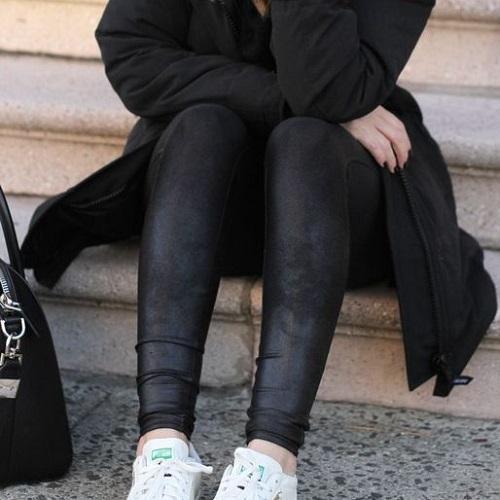
General Textile
Foils can be applied in; velvet, knitted and woven fabrics, clothing fabrics for outer/inner/underwear/upholstery and curtain home textile fabrics, shoe and bag fabrics, fabrics made from natural and synthetic fibers.
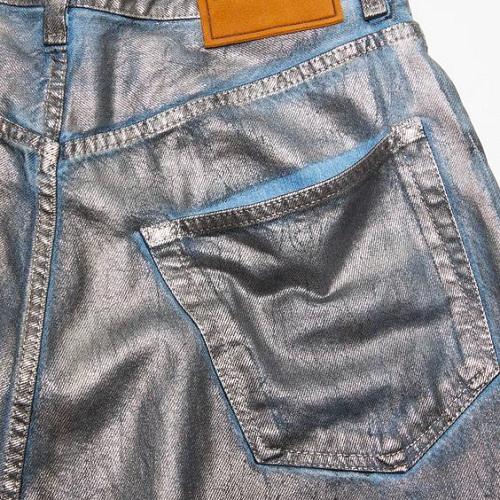
Denim
Foil-printed denim, a recent fashion trend, is achieved by applying adhesive to finsihed final products using a spray method, followed by transfering foil to achieve results that complement the worn nature of denim.
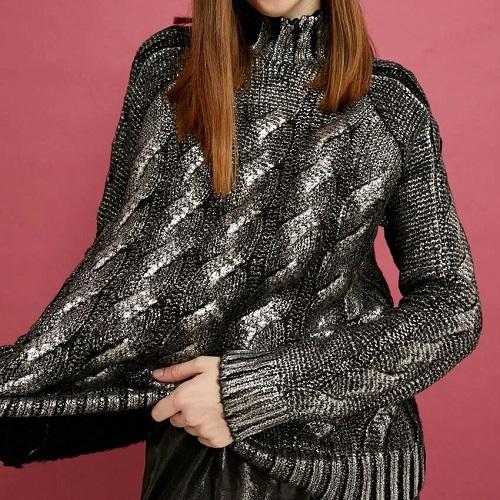
Knitted Fabrics
Adhesive covering is usually applied to knitwear by spray or rotary printing. Knitted fabrics using plastisol or water-based adhesive can be coated with suitable foils.
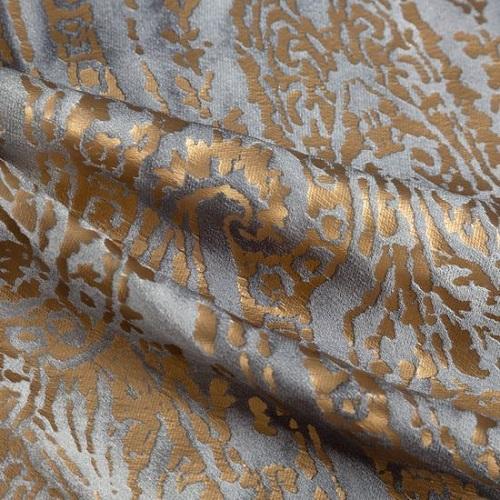
Home Textiles
Foils used in curtain and upholstery fabrics harmonize with all types of patterns. For high abrasion resistance in upholstery fabrics, foils printed on crystal foils are recommended over other adhesives.
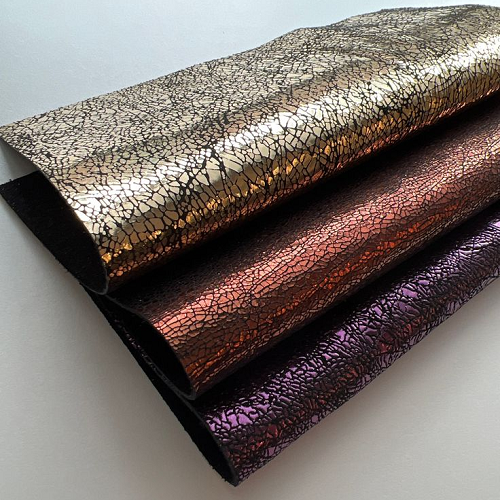
Leather
Foils can be applied to leather and suede used in shoes, bags or apparels. They are particularly beneficial in concealing some flaws inherent in natural leather.
Hot Stamping Foil Printing Stages
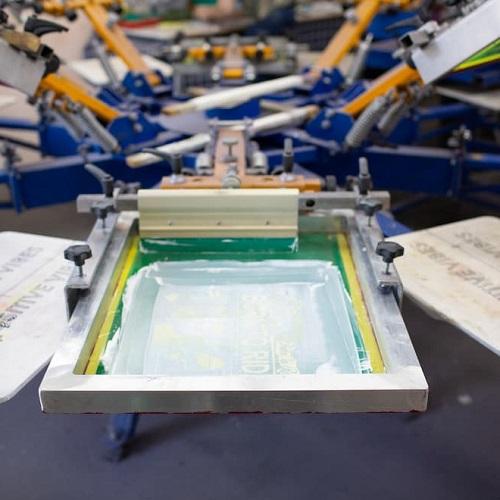
1
Base Formation
The textile/leather surface is patterned by applying adhesive through screen stencils, rotary templates, spray, engraving cylinders or using crystal foils.
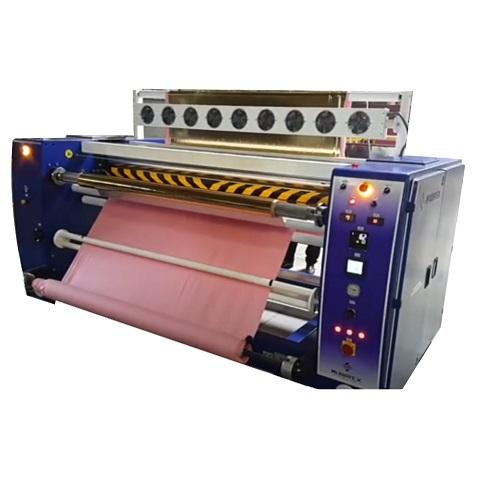
2
Pre-Printing
In partial printing, foil is cut and prepared according to the pattern dimensions. In roll to roll printing, foil is fed with correct tension. Proper transfer requires wrinkle-free foil larger than the adhesive area.
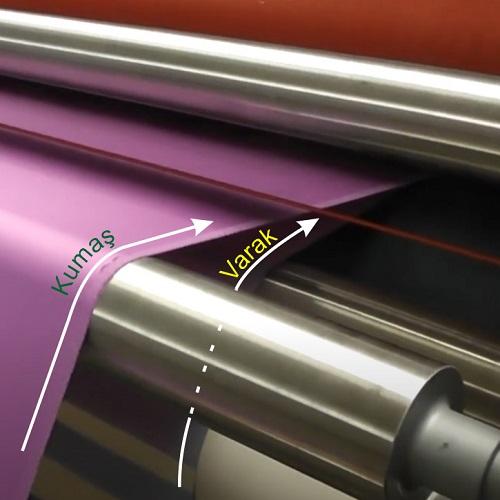
3
Foil Transfer
Parameters are Temperature X Pressure X Time, though recommended by suppliers, depend on the adhesive applied to the fabric/leather and the operational capabilities.
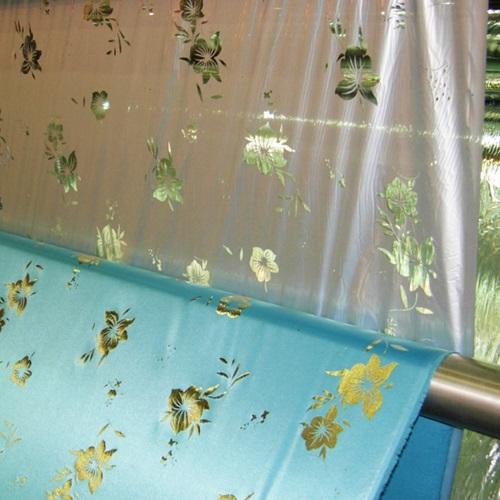
4
Post-Printing
Foils transferred with heat are usually recommended to peeled off the carrier film after cooling. Peeling when it is still hot can sometimes lead to matt appearance due to the adhesive's physical properties.
Adhesive Types Required for Foil Printing
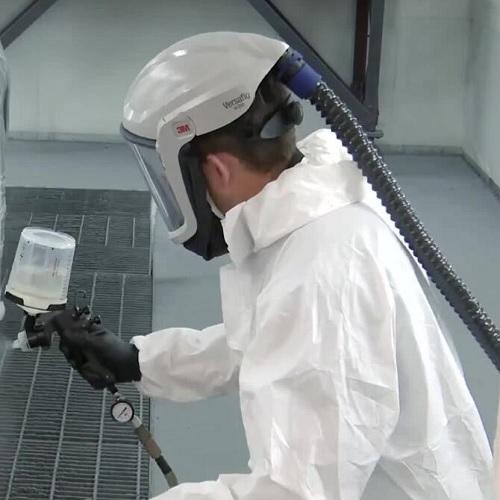
Water Based Adhesive
Water based adhesive are used in partial printing and roll to roll printing as well as in spraying with air gun applications.
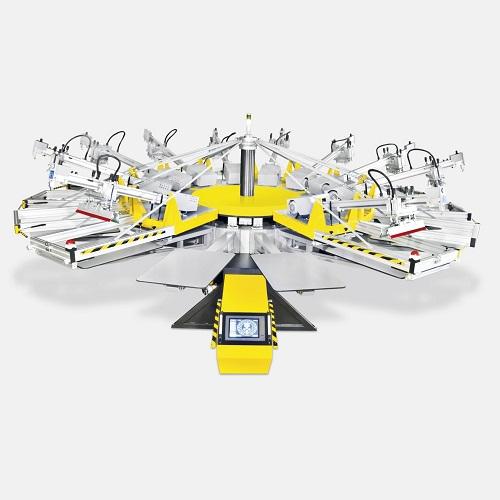
Plastisol Adhesive
Plastisol based adhesives used in roll to roll and partial printing to stand out with high wash durability.
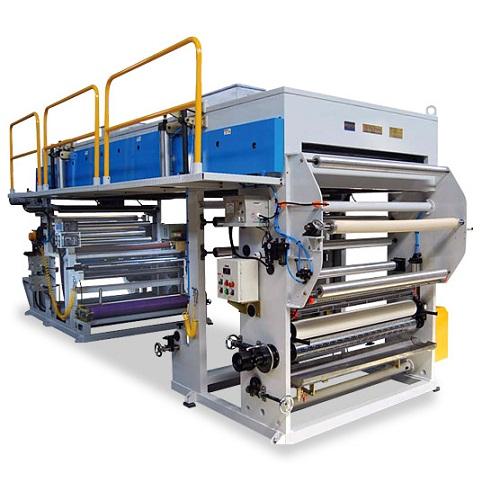
Solvent Based Adhesive
Solvent based adhesives, reduced in weight during printing process by removing solvent that produce fine texture and soft handfeeling.
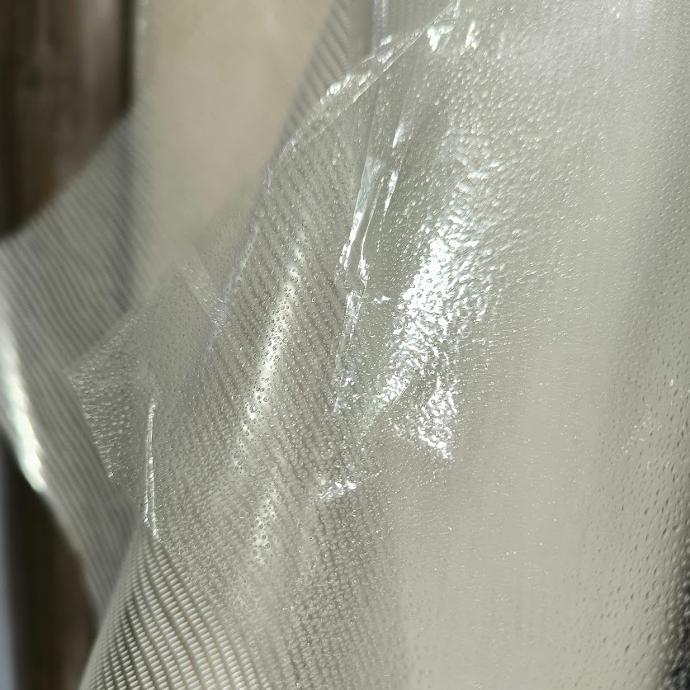
Crystal Foil
Pre-patterned hotmelt adhesive crystal foils are applied to the fabrics as a base for foil application using only heat and pressure.
Adhesive Application Methods

Octopus Printing
Adhesive bases for foil printing can be applied using machines in screen printing workshops for partial printing.
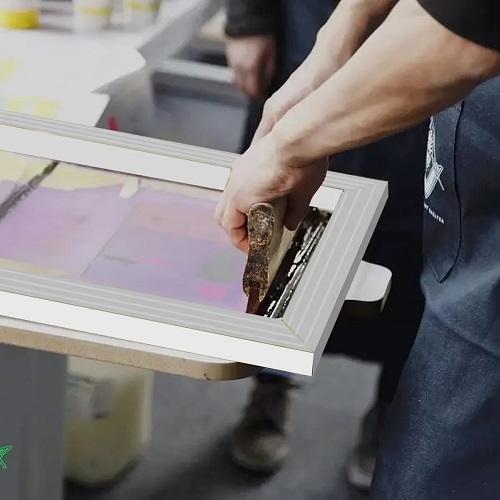
Screen Printing
Manual printing is possible using screen stencils that are used in machine. It is specially used for sample preparation.
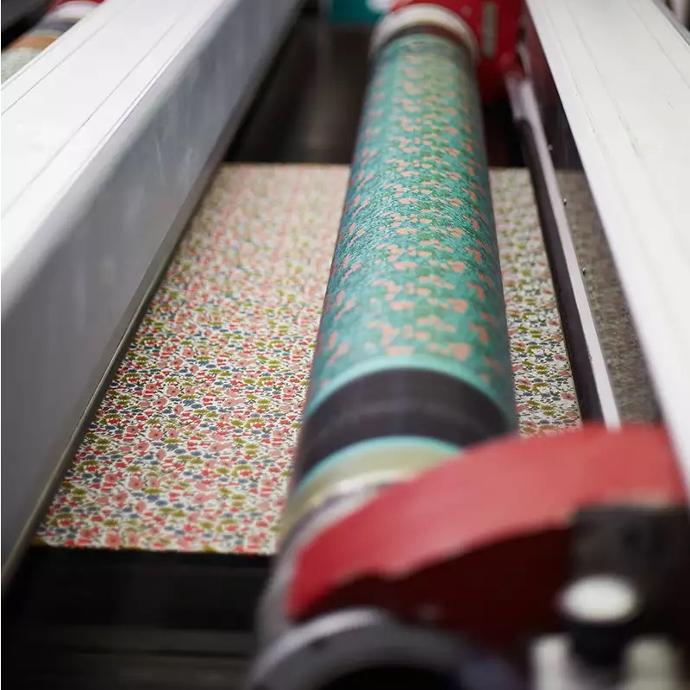
Rotary Printing
Rotary template stencils used for roll to roll printing in printing and dyeing houses apply adhesives like single headed machines or single color printing.

Gravure Printing
Smog printing machines are used for application of very low-weight solvent based adhesives. It provides more durable results compared to other application methods.
Examples of Standard Foil Printing Machines
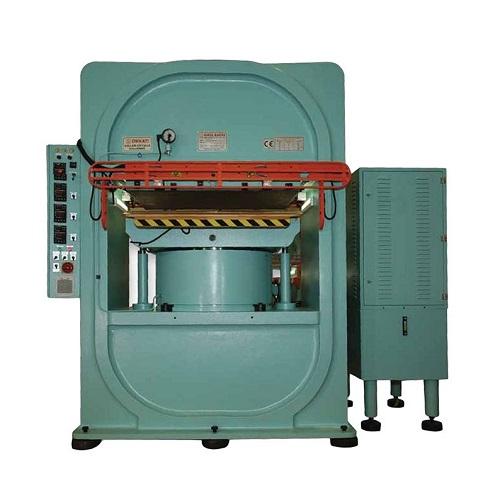
Leather Press
High-tonnage presses used for leather ironing, embossing, and printing provide applications with higher pressure capacity and lower temperature.
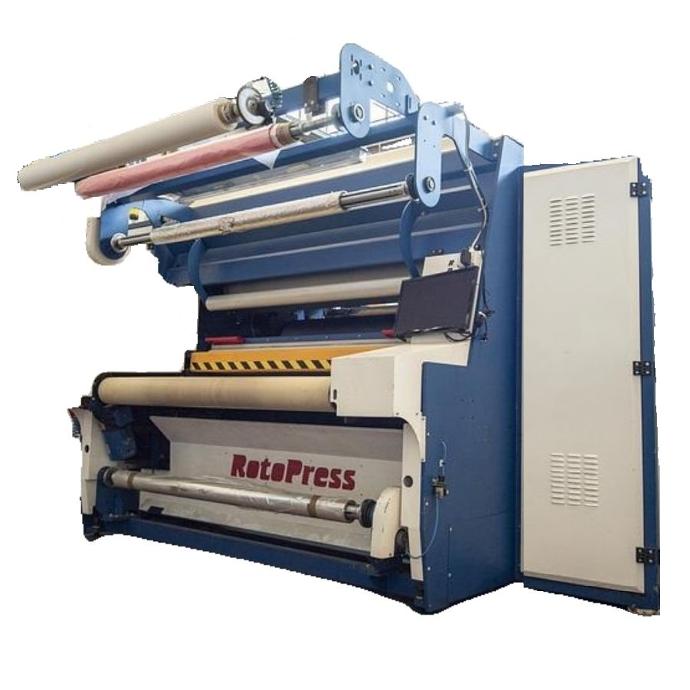
Roto Press
Roto presses are preferred for flawless foil printing on fabrics pre-patterned with adhesive in roll to roll printing, ensuring correct tension, temperature and speed.

Flat Press
Multifunctional stone presses that are used in small and large printing workshops, are also used for foil printing.
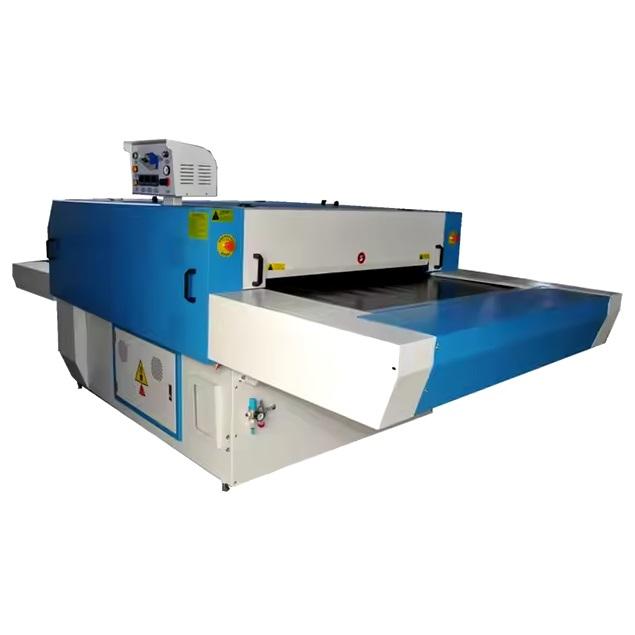
Fusing Press
Fusing presses, indispensable for screen printing workshops, offer ease of use for high-volume partial printing production.
Other Products can be used for Foil Printing
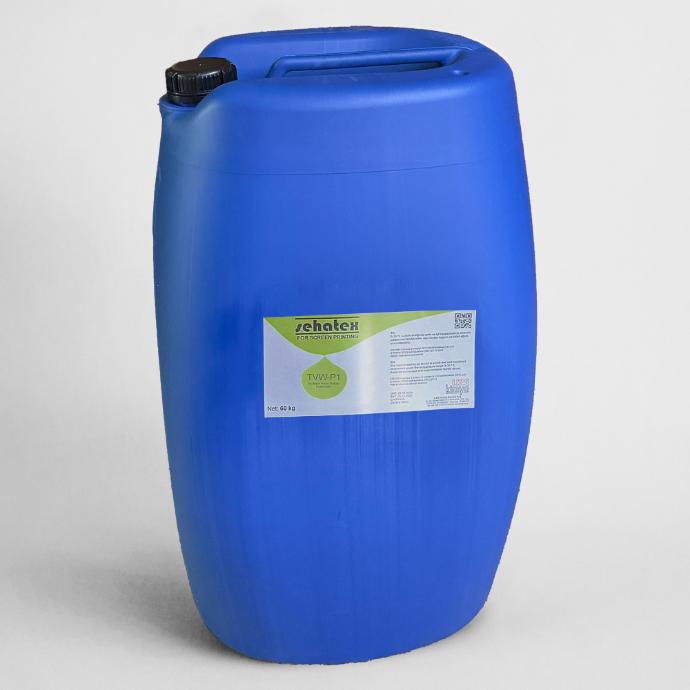
Water Based Adhesives
Suitable for roll to roll and partial printing, and can be applied via spray.

Plastisol Adhesives
It can be used in roll to roll printing and partial printing. It is phthalate-free.
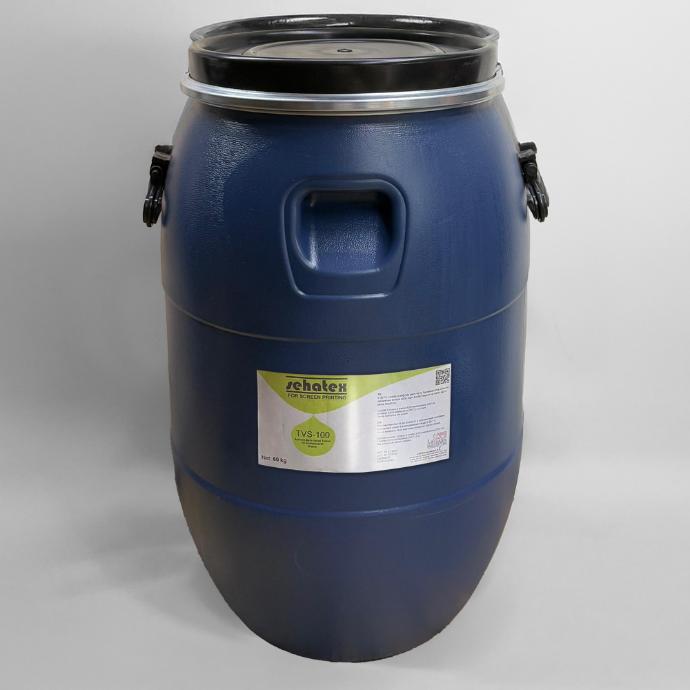
Solvent Based Adhesives
Designed for use in smog gravure printing machines.
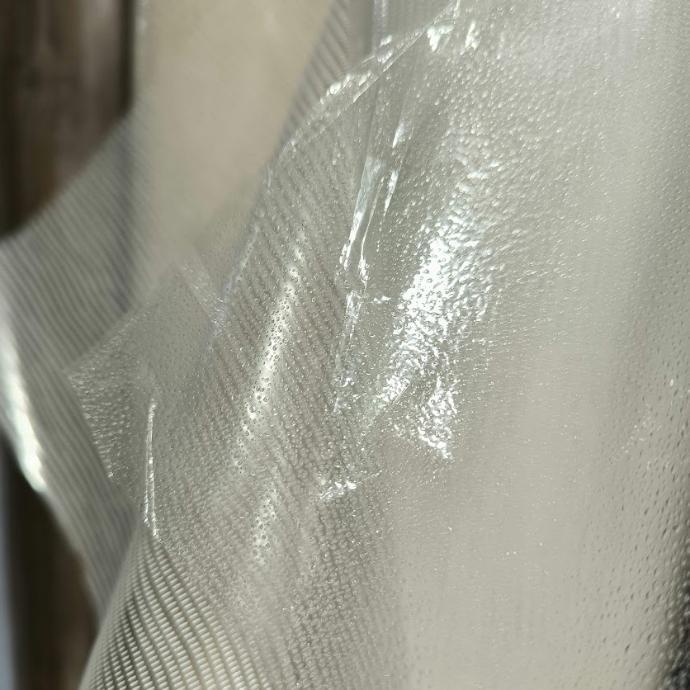
Crystal Foils
Pre-patterned hotmelt based foils with high durability.
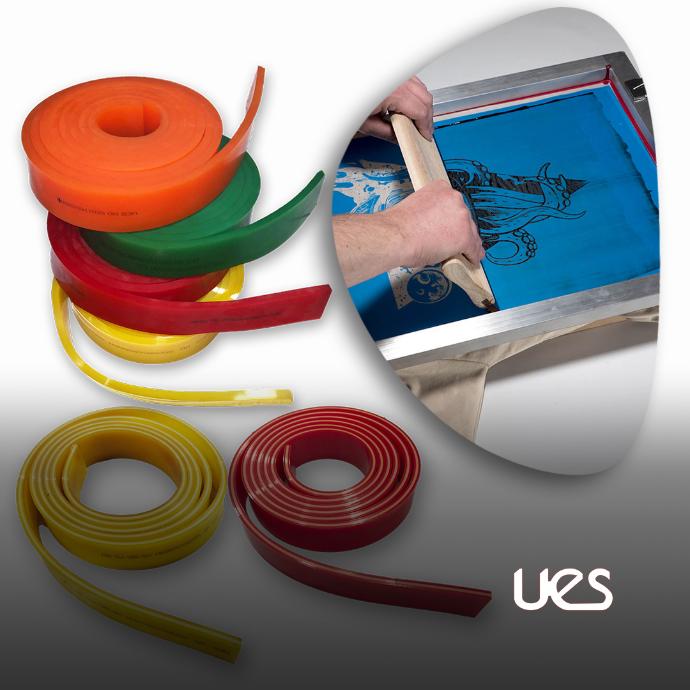
Squeegee Blades
Used for scraping in rotary and screen printing stencil applications.
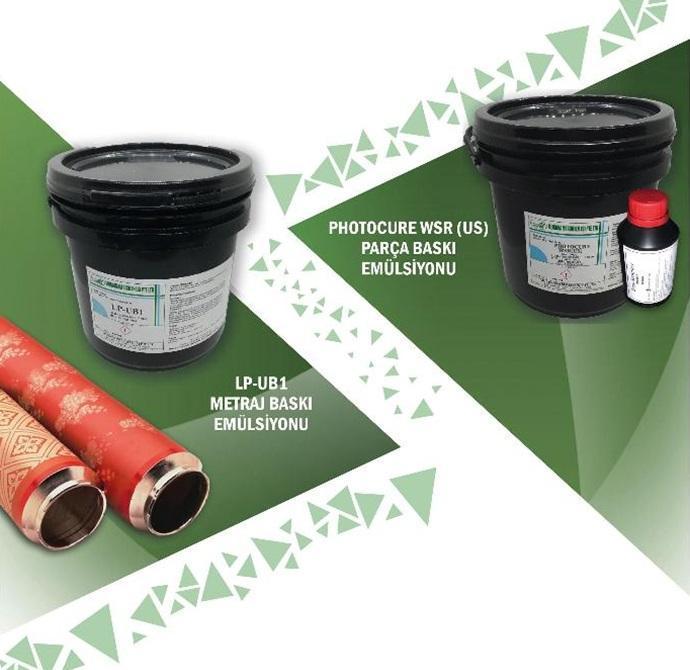
Photo Emulsions
For preparing rotary and screen printing stencils.
General Warnings about Foil Printing Applications
The information provided on this page about foil printing is for general guidance purposes.
The details given under topics such as application areas, stages of foil printing, types of adhesives used, adhesive application methods, and machines used for foil printing may not cover all aspects. Application may require professional machines and expertise.
Even when performed with the same machines, applications depend on specific adjustments and some critical variables. These include foil, adhesive, and the surface on which the application is made. For instance; a temperature suitable for cotton fabric may cause shrinkage on polyester fabric or applications yielding more durable results on washed fabrics may perform poorly on silicone coated fabric.
Foil, which do not inherently adhere to fabric or leather but can adhere to the surface they are transferred to, rely on an intermediary adhesive for transfer. The quality of the adhesive, its activation temperature, and parameters such as fixation temperature and duration are critical for achieving the desired result.
Foil printing involves some technical complexity than traditional printing methods. It is often performed by subcontractors rather than integrated facilities such as dyehouses or tanneries. By addressing weak points in this process, predictable results can be achieved with ease.
Troubleshooting and Technical Information page is for theoretical insights into common issues.
For technical support, feel free to contact our company.
The information provided on this page about foil printing is for general guidance purposes.
The details given under topics such as application areas, stages of foil printing, types of adhesives used, adhesive application methods, and machines used for foil printing may not cover all aspects. Application may require professional machines and expertise.
Even when performed with the same machines, applications depend on specific adjustments and some critical variables. These include foil, adhesive, and the surface on which the application is made. For instance; a temperature suitable for cotton fabric may cause shrinkage on polyester fabric or applications yielding more durable results on washed fabrics may perform poorly on silicone coated fabric.
Foil, which do not inherently adhere to fabric or leather but can adhere to the surface they are transferred to, rely on an intermediary adhesive for transfer. The quality of the adhesive, its activation temperature, and parameters such as fixation temperature and duration are critical for achieving the desired result.
Foil printing involves some technical complexity than traditional printing methods. It is often performed by subcontractors rather than integrated facilities such as dyehouses or tanneries. By addressing weak points in this process, predictable results can be achieved with ease.
Troubleshooting and Technical Information page is for theoretical insights into common issues.
For technical support, feel free to contact our company.
